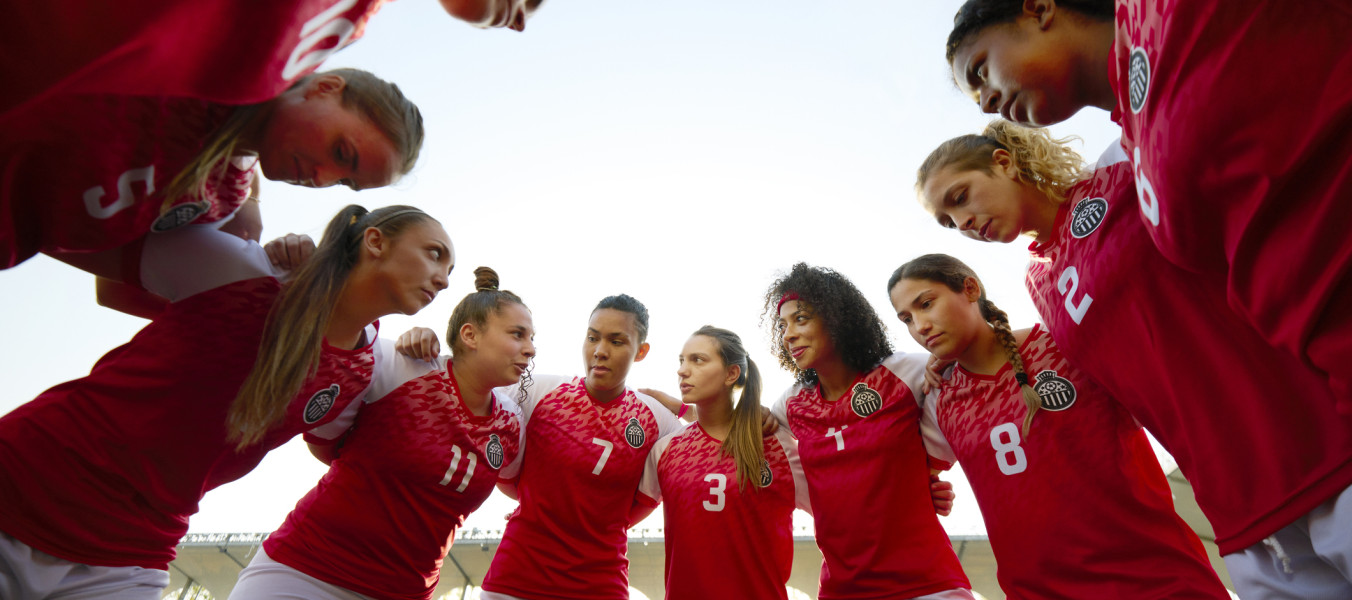The NCAA’s March Madness basketball tournament never fails to deliver surprise storylines, but the big news this season is not about a Cinderella team upsetting a number one seed. Rather, it’s about the record TV viewership, game attendance, and fan enthusiasm that the women’s part of the tournament has generated.
According to Forbes, viewer ratings on FOX for women’s NCAA tournament games have averaged higher than men’s games, and TV advertising revenue has jumped to $500,000 per spot – a fivefold increase over the past few years. Considering the women’s NCAA league is only in its third year of permission to use the March Madness brand, these stats are ultra impressive.
Also impressive – and even more important – is the way that this phenomenon, fueled in large part by University of Iowa superstar Caitlin Clark smashing the all-time leading scoring record in both the women’s and men’s leagues, has focused attention on a key outcome of women’s participation in sports: professional career success. (The Iowa-U Conn Final Four contest turned out the highest viewership of any basketball game – ever – in ESPN broadcast history.)
A recent survey by Deloitte titled “Impact of Sports on Women’s Professional Success” found that the correlation goes deep and begins even earlier than college or even high school. 85% of Deloitte survey respondents (working women who had played organized sports as girls) said that the skills developed as youth or student athletes were “important to success in their professional careers.”
Even more noteworthy, women in leadership roles answered this question affirmatively at a rate of 91%. Women earning six-figure salaries had the highest response rate at 93%. These findings comport with previous research conducted by Ernst & Young that found 94% of women who hold C-Suite level positions are former athletes and that more than half of those women played at the competitive collegiate level.
Why the powerful correlation? According to follow-on analysis of the research above, there are shared traits between athletic performance and executive leadership, such as work ethic, teamwork, determination, and an overall competitive desire to succeed. Other leadership skills noted by respondents in the Deloitte survey included: the ability to manage stress and pressure (36%), problem solving (35%) and effective communication (34%).
The increasing numbers of girls playing sports – and the effects of a full 50 years of Title XI implementation as highlighted in an excellent “Champions of Equality” essay by U.S. Representative Mikie Sherrill (NJ) – is also allowing women a stronger, elevated voice in policy debates like pay equity and gender equality in the workplace.
For example, the 2022 groundbreaking pay deal reached between the men’s and women’s national teams and U.S. Soccer that resulted in both squads being paid equally and splitting World Cup prize wins, had ramifications way beyond the soccer pitch. “What we’ve done is a landmark in progress (toward) gender equity. We set a new standard of value for women in the workforce,” USWNT forward Midge Purce told US Today about the decision’s impact.
And there is a growing global impact of women in sports, too. Upon announcing a leadership role in the UN Women in Sports for Generation Equality Initiative, International Olympic Committee (IOC) President Thomas Bach stated, “One of the key missions of the IOC is, in fact, to encourage and support the promotion of women in sport at all levels based on the principle of gender equality. Women athletes and Olympians can serve as inspirational role models for young girls around the world.” That’s certainly a goal worth celebrating when the 2024 Summer Olympic Games kick off in Paris this July.
The Ernst & Young study concluded by urging corporate business leaders to consider “the direct relationship between athletics and careers and to partner with the athletic departments of universities to identify high-potential candidates, much as they do with finance, accounting or business departments,” as part of their hiring or leadership development recruitment programs.
While the advice above was directed to major corporations, there is also a role for Main Street to recognize and support the connection between women in sports and career success. The printing industry, specifically, can play a part in growing and harnessing the professional benefits of athletic participation by girls and women.
Here are just a few ways printing companies can engage on this front:
- Be mindful of gender parity when sponsoring local sports teams and leagues. Supporting both girls’ and boys’ organized sports may require additional funds, but will send an important message to female employees and “girl parents” that the company values youth development equally. Bonus: the broader community and customer base will see your company’s commitment to gender equality.
- Conduct community outreach to womens’ sports teams at nearby high schools and colleges. Utilize your company’s in-kind donation budget to ensure that athletic programs maintain gender equity when it comes to promotional print. Step in to fill a void for women’s sports if printed posters or schedules are needed. Next level? Invite a women’s team to see where the print advertising element of Name, Image and Likeness deals all begin. Even better, use sports print marketing as a hook to attract your next rock star intern and expose more women to print!
- Don’t overlook extracurricular sports experience on a potential job candidate’s resume. Given the proven data correlation between athletics and career success, it’s likely worth a line of conversation with a potential recruit to learn more about skills, traits and drive that may predict the former athlete’s potential at your company. Make sure your HR team is familiar with current research on the topic of women and sports.
- Untap and leverage women’s leadership potential within your current workforce. It’s quite possible that former or current female athletes are hiding in plain sight at your company – and that you’re missing out on tasking them with leadership roles in which they might excel. Work through your HR or management team to identify women staff members who’ve played or coached on teams or individual sports. Then, map them into opportunities (or create new ones) where they can best unleash their talents for career success.
Use the strategies above as a kickstarter and continue brainstorming on the best ways for your company to support and benefit from executive training and career success driven by women’s involvement with sports. If you’re a working mom in print, stay attuned to the evolving body of research and consider at least exposing your daughters to organized sports. While athletics aren’t for everyone (and I’d love to see more research on how extracurriculars like band and theater prepare women for the workforce), cheering on girls and women in sports is a win-win for all.




